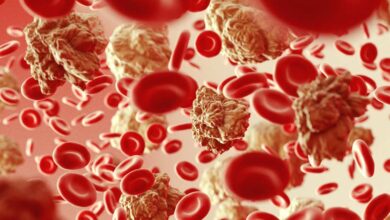Green Hospitals: Sustainable healthcare management is essential, not optional

The expansion of medical practices and the significant evolution of the healthcare sector have demonstrated that environmental factors impact healthcare, just as healthcare influences the environment. Experts agree that any effort to achieve environmental sustainability in the healthcare sector must begin here. Developing an advanced hospital model is key to enabling healthcare centers to transition into environmentally friendly institutions.
Another important observation is that healthcare was often overlooked in discussions on reducing environmental impact. However, over time, it has become increasingly clear that healthcare is the most critical field in which we can work to achieve greater sustainability. This realization has led to the emergence of a new concept in sustainable medical practice: green hospitals. This shift toward a more environmentally friendly healthcare system is no longer a luxury or a modern aesthetic; it is a necessity. When we examine the core of medical practice and its impact beyond hospital walls, including social, operational, and financial dimensions, it becomes undeniably clear that adopting eco-friendly practices lies at the heart of healthcare operations. The primary goal is human health, which begins with the surrounding community, the environment, and daily lifestyle. Preventing illness before it starts with preserving the environment.
As Janvi Solanki, Vice President of Clinical Programs at Humber River Health in Toronto, Canada, puts it: “Sustainability is not just a goal, it’s a responsibility.” She adds, “Every decision, from patient care to operations, must consider its environmental impact.”
Pathways to Change
The concept of a green hospital is crucial for promoting sustainable development in the healthcare sector. The goal is to minimize the environmental impact of hospitalization while enhancing the health and well-being of both patients and staff. This objective is being actively pursued and is included in the United Nations Sustainable Development Goals (SDGs).
The healthcare sector, designed to protect health, ironically contributes to environmental pollution that harms it. This highlights the critical need for healthcare institutions to embrace eco-friendly practices. Sustainability is now a global priority focused on efficient resource use and widespread social recognition.
Key elements in achieving green hospital certification include integrating renewable energy sources, adopting innovative practices, utilizing smart building systems, and striking a balance between the benefits and challenges of implementation. Environmental sustainability criteria assess how hospitals minimize resource consumption and carbon footprint while maintaining high-quality patient care and staff satisfaction. Around the world, more healthcare centers are pursuing environmental certifications, redesigning their operations, creating green operating rooms, and reducing waste. But this transformation requires significant effort and planning. Hospitals face unique challenges due to their continuous operation; unlike offices or factories, they can’t “shut down,” making energy demands constant, even at night.
How can we make hospitals more environmentally friendly?
The Global Green and Healthy Hospitals (GGHH) agenda seeks to replace harmful chemicals, improve waste management, enhance energy efficiency, reduce water consumption, and design greener facilities. These actions have direct effects, such as reducing tons of CO₂ emissions. The philosophy behind it: “The health of people and the planet are inseparable.” A green hospital prioritizes three key elements: environmental protection, agility, and digitization. This approach ensures sustainability in all operations, including waste reduction and efficient infrastructure. For example, one hospital uses ORCA food waste digesters to turn organic waste into liquid, cutting greenhouse gas emissions. Its kitchen staff prepares 80% of meals fresh onsite, vacuum-seals leftovers, and favors reusable items. As hospitals recognize their environmental impact, global networks are emerging to reform healthcare practices and promote proper medical waste disposal, while facilities upgrade to meet green standards. Operational needs often create chances for green enhancements.
A Roadmap to Better Health
Successful examples of eco-friendly hospitals include the installation of photovoltaic panels, which save up to 25% of energy use. In the future, these systems could also power electric vehicle (EV) chargers or fully meet the hospital’s energy needs. Transitioning to energy-efficient systems is critical. Technologies such as LED lighting, smart building systems, and renewable energy sources can significantly reduce a hospital’s carbon emissions, with some reductions reaching up to 60%.
Key strategies include upgrading infrastructure, enhancing energy efficiency, and integrating renewable energy to reduce greenhouse gas emissions. Ensuring that healthcare systems like heating, cooling, lighting, and water operate efficiently is vital for a healing environment. Waste management, a newer research area in healthcare, is also important because hospitals generate significant waste, especially from operating rooms. Effective sorting, recycling, and innovative techniques can mitigate medical waste and environmental impact. Sustainable purchasing of eco-friendly medical supplies and food can further lower the ecological footprint. Even choosing the right window glass is essential for optimizing energy use and temperature control.
Healthcare buildings (HBs) operate continuously and are crucial for society. Regular assessment of Indoor Environmental Quality (IEQ) is vital for patient recovery, involving air quality monitoring and advanced filtration to reduce airborne pollutants like volatile organic compounds (VOCs) from paints and furnishings. Additionally, green building design, which includes natural lighting and sustainable materials, enhances energy efficiency and fosters healing environments.
In the UK, the NHS is working to reduce the environmental impact of inhalers, which significantly contribute to their carbon footprint. By switching from pressurized metered-dose inhalers to dry powder inhalers, they aim to cut carbon emissions by 58 kilotons annually.
Hospitals around the world are adopting similar innovative practices to go green, without compromising patient care. As awareness of climate change grows, the shift toward green hospitals is expected to accelerate.

A More Critical Role
The healthcare sector faces the challenge of balancing its life-saving mission with its environmental impact. As the saying goes, hospitals must heal both people and the planet.
Climate change threatens public health, making healthcare institutions crucial for environmental stewardship. Green hospitals reduce ecological impact and promote sustainability in their communities. Sustainable healthcare buildings minimize natural resource use, support public health, and reduce pollution while boosting occupant health and well-being
Smart healthcare buildings now use advanced technology and building management systems to improve patient care, operational efficiency, and building performance.
The benefits of green hospitals go beyond environmental protection. Studies have shown that they can improve patient outcomes, reduce operational costs, and increase staff satisfaction.
Green hospitals focus on sustainability in healthcare. They use eco-friendly design strategies in new and renovated projects, aiming to reduce their environmental impact while providing quality care. This shift signifies a new approach to healthcare delivery, establishing sustainable practices as essential for responsible healthcare leadership. Green hospitals exemplify sustainable development, showing that environmental responsibility aligns with healthcare excellence. By focusing on design, resource efficiency, and community well-being, they prove we can protect the planet while providing high-quality care.














